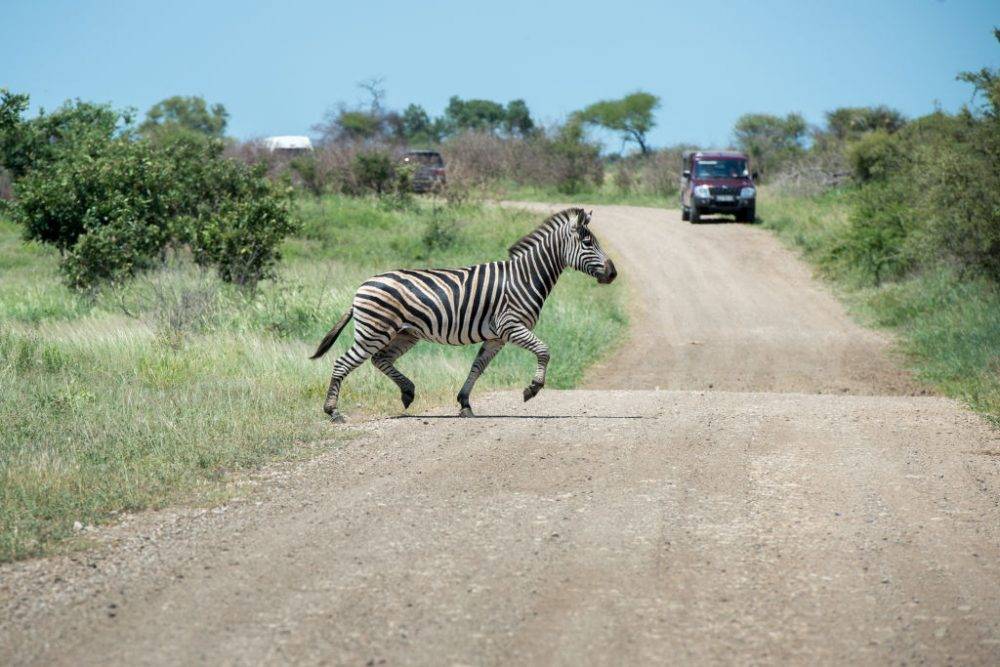Former environment minister Barbara Creecy.
Fifteen animals, including a lion and several hyenas, have been killed by vehicles on roads inside the Kruger National Park since 2020, according to Forestry, Fisheries and Environment Minister Barbara Creecy.
Roadkill figures provided by the minister for the Kruger showed that in 2020, a bateleur and a zebra were killed on the park’s roads and, in 2021, three impala, a lion and a zebra. In 2022, two brown hyena and an impala were killed and, in 2023, a brown hyena, an impala, a kudu, a spotted hyena and a steenbok were recorded as roadkill.
Creecy was responding to parliamentary questions posed by Tamarin Breedt of the Freedom Front Plus last month. Breedt had asked the minister about vehicles speeding and resulting in associated animal mortalities in the Kruger, including unethical behaviour by visitors and overcrowding at animal sightings; and what the total number and kind of species killed by vehicles was from 2020.
She also inquired whether any regulations had been proposed or implemented to control unethical behaviour by visitors to the Kruger National Park and to limit overcrowding at animal sightings.
“The number of animals killed on Kruger National Park roads is difficult to quantify accurately as most carcasses, especially those of smaller animals and birds, are scavenged quickly and disappear by the time the local ranger passes on the road,” said Creecy in her written response.
 Fifteen animals, including a lion and several hyenas, have been killed by vehicles on roads inside the Kruger National Park since 2020. (Photo by: Edwin Remsburg/VW Pics via Getty Images)
Fifteen animals, including a lion and several hyenas, have been killed by vehicles on roads inside the Kruger National Park since 2020. (Photo by: Edwin Remsburg/VW Pics via Getty Images)
She said all visitors to the Kruger are given a copy of the park rules upon their entry in their permit. The national park has 10 traffic officers to manage visitor behaviour on the 2 775km of tourist roads, the minister said.
Additional interventions include regular communication campaigns on the results of speeding in the park. “This campaign includes information and awareness about the park rules and the consequences for breaking the rules. The communication campaign is also conducted through the … SANParks social media sites to reach a wider audience.”
Road signage has been redesigned to make it more visible while research has been done to identify the most effective road signs and high-risk points in the park. There is continuous speed monitoring using “hotspot” camera trapping by the park’s traffic officials.
“Speed-governing devices have been installed in almost 90% of official vehicles where fleet vehicles have a speed limit of 60 km/h,” the minister said. “The only exceptions are emergency vehicles and some official ranger vehicles.”
Two processes have been launched to address the “escalating problem” of overgrown road verges. The first clearing programme is through the SANParks Honorary Rangers, and the second is through a job fund application, which has made it through to the final round of consideration. But Creecy said that bush thickening on road verges will need more money to implement.
“The KNP’s management recognises unethical behaviour, speeding and roadkill as a serious matter and will continue to give it the fullest attention,” Creecy said.
“Visitation to the Kruger National Park has grown exponentially over the years. The increased pressure on facilities and congestion on roads necessitated Kruger National Park management to implement gate quotas,” she said, adding that these vary at each entrance gate and are usually only reached on long weekends or during school holidays.